Native Elder Valerie Maidens and Northport Indian UMC claim wisdom and courage in their rich indigenous heritage.
JAMES DEATON
Content Editor
Weathered stairs led down to a beautiful Lake Michigan beach. The turquoise waters stretched toward the horizon as the summer breezes whipped up waves across the sand. Moody skies were oddly comforting. The big lake felt as endless as the ocean but as close as a friend.
Valerie had taken this path many times, but it had been a while. Many things have changed, but the land, the people, and a deep spiritual connection still hold her tightly.
“Growing up,” she says, “I would come here often with my two sisters and swim. We didn’t live far. My two brothers — crazier than us girls — took a steeper route down the dune bluff where the Ottawa village of Onominese used to be. We’d meet up later.”
This secluded beach is between Leland and Northport, along the western edge of the Leelanau Peninsula. Just down the road from the beach, past million-dollar properties, there’s a landlocked Native cemetery with over 160 graves sacred to her family and community.
Valerie and two of her siblings, Faith and Tom, along with their church family at Northport Indian United Methodist Church and a host of advocates, fought to reclaim and gain access to the Onominese cemetery that had been neglected for many years. The property is now entrusted to the church, and they have committed to caring for it.
Through a series of divine interventions, Valerie and her family discovered the cemetery property had been deeded to the Northport Indian UMC trustees many years ago. And one of the trustees was Thomas Nayaatooshing – Antoine, Valerie’s great-grandfather. So, the family labored to legally transfer ownership to the church, which allowed the church to obtain over $30,000 in grant money to clean up and restore the Onominese cemetery.
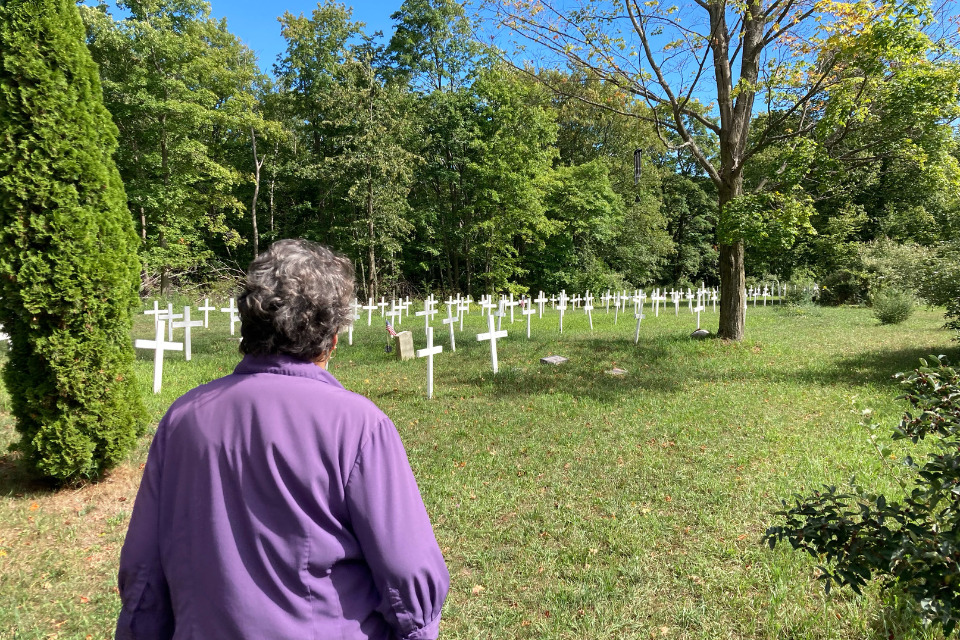
On the other side of the peninsula, there’s another holy site, a campground that has hosted worship services and camp meetings since the late nineteenth century. In this cathedral of towering trees, Native American United Methodists have shared meals and danced and offered untold prayers, testimonies, and songs in indigenous languages. Countless people have given their lives to Christ. Many have received revelations and assurance from God.
These places and the rich religious and cultural traditions of Native Christians have been a source of wisdom and strength for Valerie Maidens and the members of Northport Indian UMC. From ancient wells, God as Creator continues to affirm their sacred worth as beloved children of God. Past and present saints surround them, lifting prayers in faith and cheering them on.
Valerie believes God has always been with her, closer than her next breath. And her heart has always been in Michigan, even when she spent over 30 years living in Ohio. She was born and raised in a close-knit Ottawa community in Northport during the 1950s and 60s. Following high school graduation, Valerie worked as a nanny for a family from Cincinnati. They invited her to go back with them to continue working and attend the University of Cincinnati. She decided to stay and build a life there after getting married and having a son.
“But Michigan always had my heart,” explains Valerie. “I had this longing to be back. So, in 2000, I decided to pack up and move back here. I was going through a divorce, and my son was grown and living on his own. My mom was alive at the time, and she lived for another two years, which was great because we got a chance to bond during that time.”
Returning to Michigan reconnected Valerie with her family, her Native community, and Northport Indian UMC. The Holy Spirit drew her back into the circle, which she was always part of, even while living in Ohio, and she began to retrace those footpaths she once walked as a young person while trusting Christ to lead her down new ones.
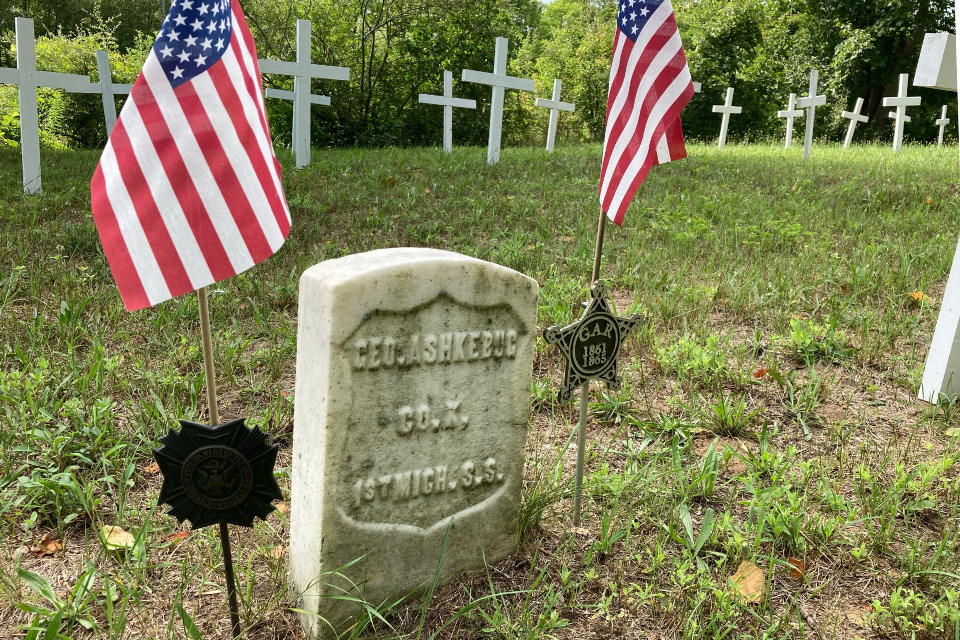
Walking these paths has been a spiritual practice — from the beach, past the cemetery and the dunes that once held a Native village, by the place where the house she grew up in once stood, across fields to the church, and down dirt roads to a wooded campsite, and then back again.
There’s a weightiness, a holy responsibility in this, too. Valerie experiences this during the annual camp meeting held at the campgrounds each summer. She says, “I go there and feel this really deep connection with the elders that have passed on. And I feel it’s my responsibility, since I’m considered an elder of the church now, to take care of the campgrounds, the church, and our cemetery, and hopefully, we can get some younger people to step up and do likewise.”
For over 120 years, Native American Christians from various parts of the United States and Canada have come to Northport during camp meeting season. Historically, Northport is one of several locations they visit during warmer months of the year. This is a time to reunite as one family of believers from different tribes and prepare for spiritual renewal, praying for an awakening to God’s Spirit in their lives and communities.
David Bearshield, a Native American representing his bloodline of the Cheyenne – Arapaho and Kiowa Tribes of Oklahoma, has been coming to Michigan for many years and knows the camp meeting circuit well. He traveled to the Northport camp meeting with a singing group this year.
“Oklahoma is the Bible Belt of Indian country,” says David, “and it has had a beautiful connection with Northport. This was a bridge point between camp meetings across the United States. You would go from Oklahoma east to North Carolina, then up to New York into Michigan to Mt. Pleasant, Northport, Kewadin, and others, and then you’d head back. It’d be full circle.”
Northport held something special for those journeying the camp meeting circuit. Bearshield says, “Scripture talks about ancient wells, and this place has been a well for our people. That’s why you see people coming from all over. It is one of the most trailblazed places of revelation in Indian country. It was a place where we’d come and receive and take back to our regions. It would ignite revival. That’s how important it was to us.”
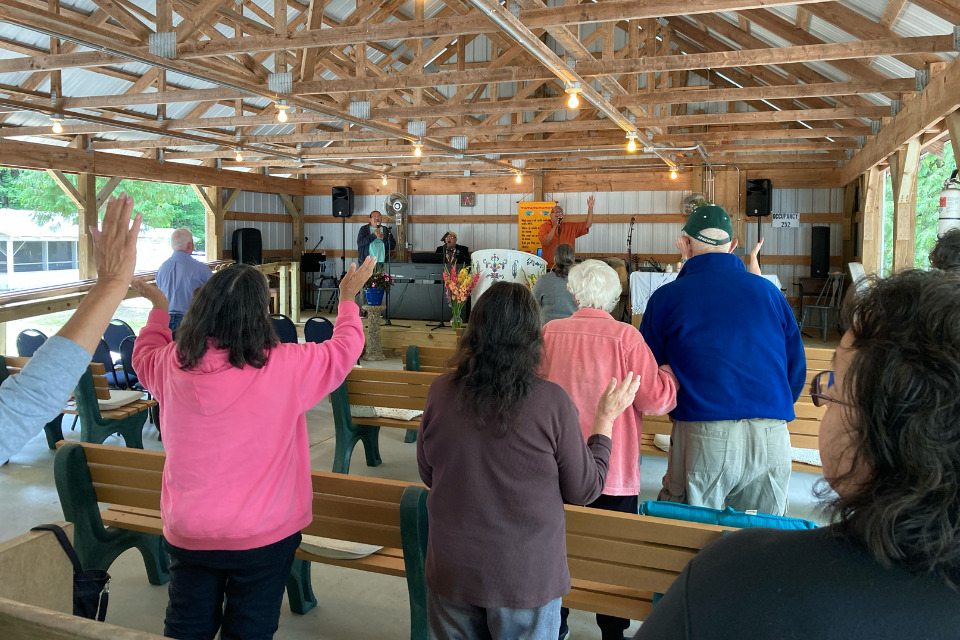
And it still is today. David believes a new generation of Native believers is rising, and it’s coming to pass quicker than can be imagined. And the campgrounds give witness to this. “All of the teachings and implements that have come to this area,” he says, “are now bringing us to the forefront of the prayers that have been prayed on these grounds in generations past.”
Camp meetings are legendary. Native American evangelists would travel from afar to speak to large crowds gathered to hear God’s word. For example, the 1905 Annual Conference Minutes reported that 2,000 people attended the 10-day camp meeting in Northport.
Valerie recalls hearing about the camp meetings before her time: “I remember an elder telling me meetings went way into the night, and you could hear them singing throughout the whole area. It was so beautiful. One would start in their Native tongue; others would join until there was a big crescendo with everyone just singing and praising God. Can you imagine that?”
Camp meetings are a time of renewal for Valerie. She values getting together with other Native people of Christian faith. She loves the mealtimes, worship in the tabernacle, singing and praying together, and reconnecting with loved ones, past and present. The spirits of elders gone on are present with the congregation, surrounding them like a great cloud of witnesses. Valerie honors her mother by adorning the worship space with gladiolas, her mother’s favorite flower.
The Northport Indian campground is home to the summer camp meeting and weekly Sunday worship services during warmer months. When it turns cold, they return to the church building a few miles away. The building dates to the late 1800s and has had a few expansions over the years, and modern conveniences like a kitchen have been added as needed.
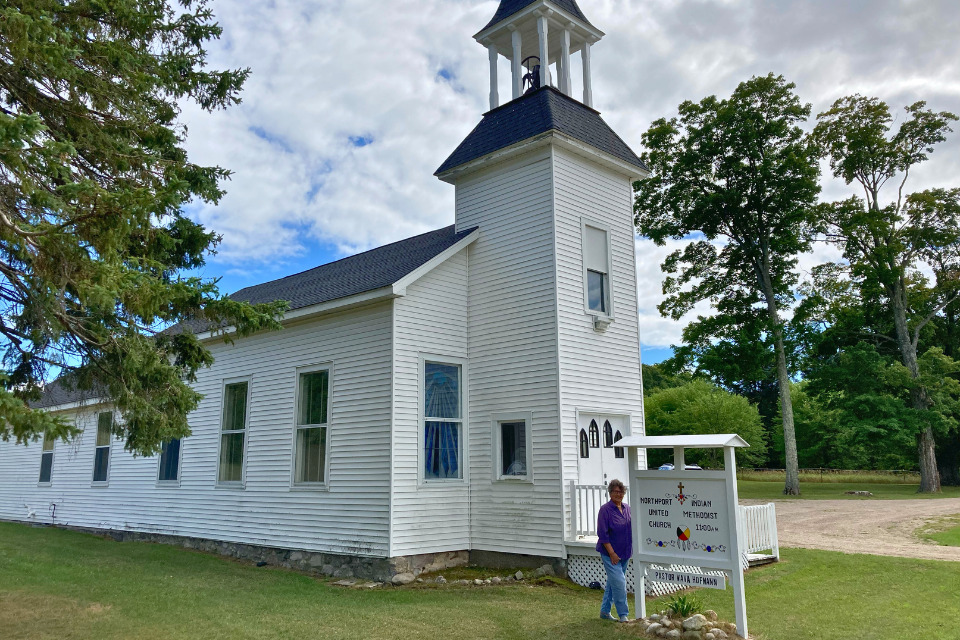
As the crow flies, Northport Indian UMC was three miles from Valerie’s home. She remembers, “My mom made sure we went to church every Sunday, and we walked from our home to the church, but we had a shortcut that went right through the woods and fields. Now it’s a cherry orchard, and I think there’s a winery back there, so it’s all different now. But we’d pick up a couple of kids living along the road there and walk together.”
Those memories linger for Valerie, but she understands that much has changed. The church is open to doing church differently as they reach out into their Native community in Leelanau County. Pockets of indigenous communities, primarily Ottawa and Chippewa, remain despite a long, painful history of racist, discriminatory laws and practices that have marginalized them.
One way the Northport Indian congregation reaches out to their Native community is through their prayer ministry. Pastor Wava Hofmann explains, “That’s the powerful part of our congregation. We have been known as a praying congregation. It’s become a well-known fact over the last few years. And even people who aren’t comfortable coming to church will call our members and say, ‘Can you pray for my son? Can you pray for my mother?’ Cancer is rampant. There’s just so much illness and trauma, and the community needs prayer, and they know they can come to us. It’s a sacred gift that we offer the community.”
Pastor Wava notes that the congregation wants to open this prayer circle to all those in the community. They just received a grant to help fund the ability to stream their worship services, which will make this possible. She continues, “And our calling is to open that prayer circle even wider and be connected to the folks that cannot attend but want to be there.”
Valerie feels the Northport Indian congregation is doing more and stepping out of their comfort zone in ministry with others. “I feel like we’re reaching out more,” she says. “We’re not staying in our little bubble anymore. There’s another world out there, other worshipers, other spiritual people.”
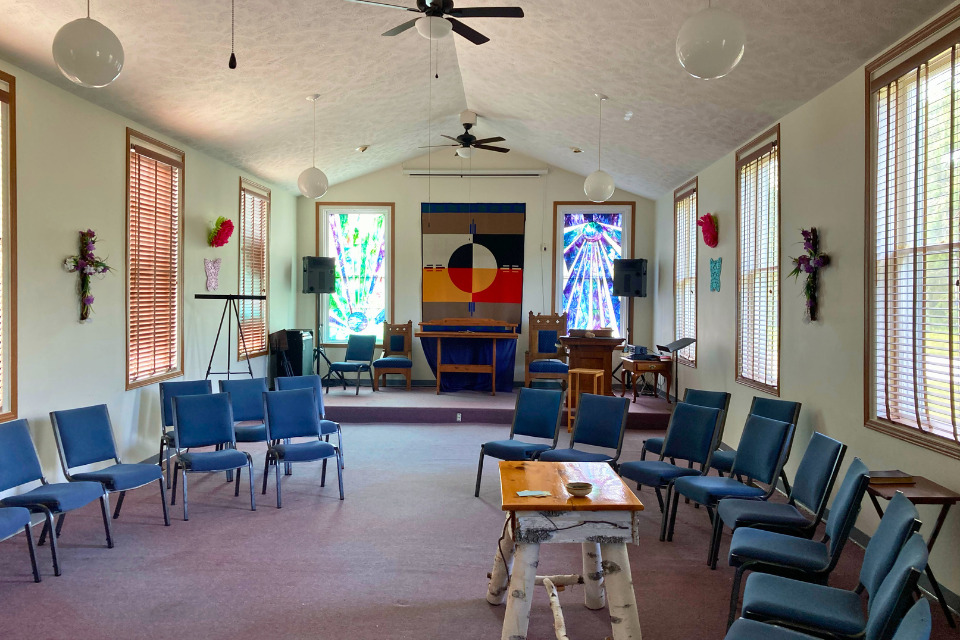
Northport Indian UMC is partnering with other United Methodist churches in the area, such as Leland Community UMC and Traverse City: Central UMC. Members of those churches help clean up the campground each spring, and some were instrumental in restoring the Onominese cemetery. Central UMC also joined members of the Grand Traverse Men’s Shed, a community service organization, to replace or rebuild over 160 wooden crosses for the cemetery in 2019.
The congregation is opening itself to partnering with local churches and organizations, and they remain deeply connected with the other Native American United Methodist congregations in the state. Valerie has been involved with the Michigan Conference’s Committee on Native American Ministry (CONAM) since she returned to Michigan. She serves as their Secretary and Treasurer.
CONAM supports the ministry of 8 Native congregations here in Michigan, plus the PaWaTing MaGedwin Kikaajik (Native American Elders Program) hosted by Northlawn UMC in Grand Rapids. CONAM works to honor and preserve the indigenous cultural and religious traditions of these congregations, celebrate their gifts and spirituality, and name the challenges they face. They also call United Methodists in Michigan to learn the history, hear Native stories, and discern how they can become advocates or allies for Native communities here in Michigan.
Courageous Native women like Valerie and communities like Northport UMC are following God’s will by drawing upon deep, faith-filled traditions and practices. The wisdom of the elders is being passed on to the next generation. The history and the sacred places are being preserved, not erased. And the hearts and minds of the people are opening wider as trust is built and the boundless love of Christ transforms lives.
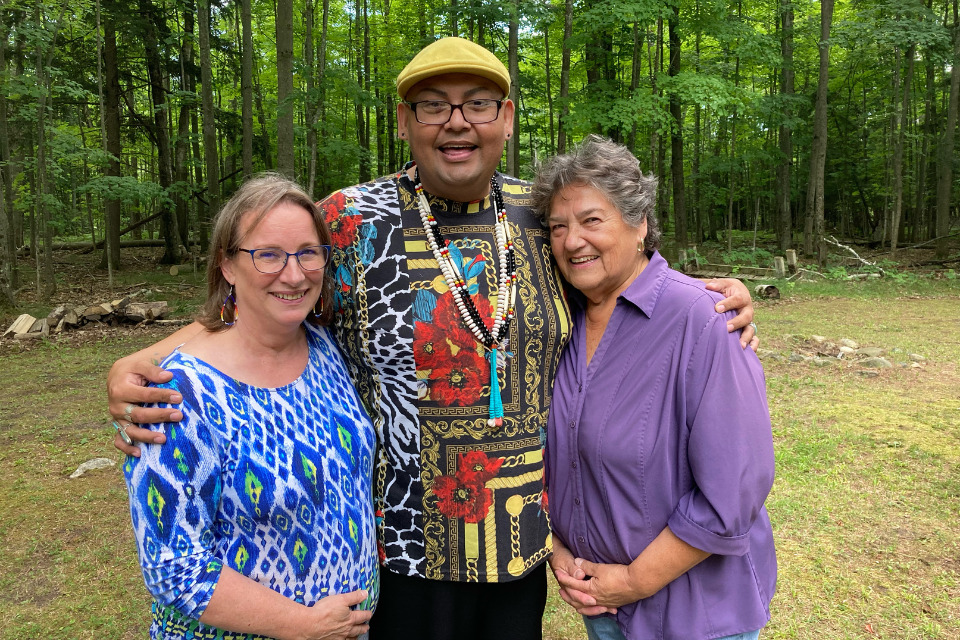
Time, for many Native American Christians, is circular, observed by the changing seasons, the cycle of life and death, day and night with the sun, moon, and stars. It’s eternal, not linear, with an end or a permanent destination.
The journey Valerie is on is similar. A God-given bond to the sacred land and culture of her Ottawa heritage holds her and brings her in, ever closer, as she labors to do good among the Native siblings in her community in northern Michigan. There’s no ending or final destination. We’re all embraced by God’s grace and love — near and far, past, present, and future.
So, Valerie knows we’ll see each other again along the way. “We don’t have a word for ‘goodbye’ in our Native tongue,” she says. “We don’t say goodbye. We just say, ‘Baa-maa-pii,’ see you soon.”
Baa-maa-pii. Amen.
November is Native American Heritage Month, so congregations are encouraged to set aside time to celebrate the lives and ministries of Native American United Methodists in Michigan. How might you do this? Have a conversation with Tammy Okuly, Chairperson of the Michigan Conference CONAM, at tammyokulyshananaquet@gmail.com. She would be glad to talk with your congregation about creative ministry. Discipleship Ministries has provided reflections and resources for celebrating Native American Heritage Month. Click here to learn more.
Last Updated on November 21, 2023

